Here's a post about the most fun I've had in a long time! Beautiful, warm spring days are finally here (at least here in Croatia) so I thought I'd use the opportunity to go out in the open and do another of my production/recording experiments. The results are everything I hoped for and more and I'm really excited about my own project and how it's taking shape! I've been thinking about trying open air recording for a long time and this weekend I finally did.
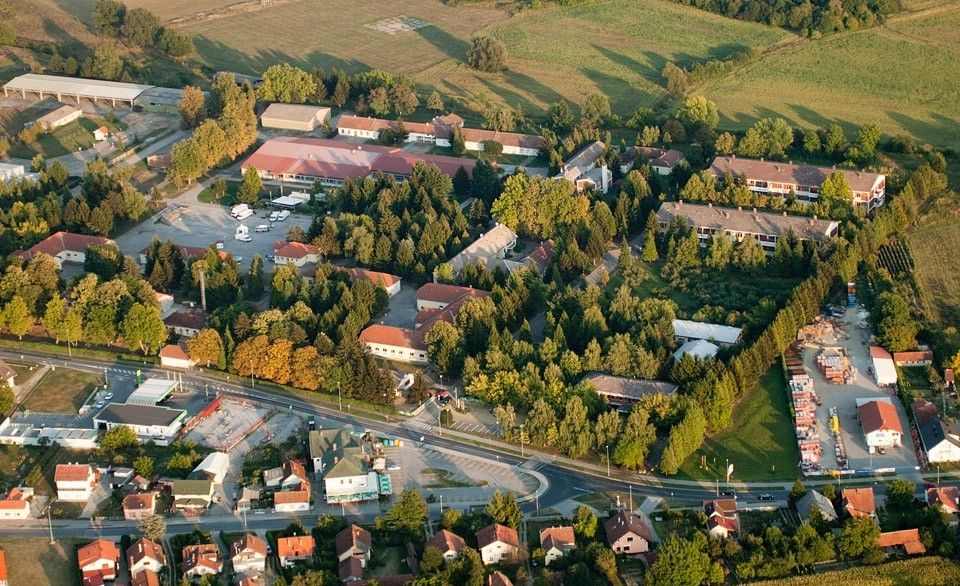
CONTEXT
My hometown Koprivnica is not more than a few miles away from the border with Hungary. It's a natural border that goes along the Drava river and if you stand on top of a skyscrapper on a clear day, you can actually see Hungary and the little villages form the other side of the river. Some of the villages near my hometown are so closely related with Hungary (like Gola and Ždala) that you would have a hard time communicating with the people living there - they speak hungarian, not croatian! Anyway, back in the 70's when all of this was still Yugoslavia, the government built a huge military base just outside of town because of the town's close proximity to Hungary. After Yugoslavia broke down, the military was still there for a few years until Croatia decided joining the military was no longer an obligation. Within a few years, the army was out and the area was abandoned. Today, it is converted into an american style university campus and used for education rather than war.
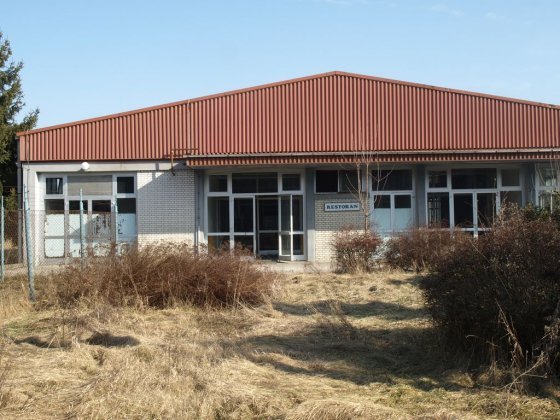
(this is what it looked like when the army left)
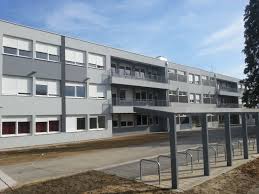
(and this is the university today)
The area is also used as a place where young people can organize art related festivals and where various student art communities can spend time working. One of the biggest such communities is FUNK (short for Forum Udruga Nezavisne Kulture or Forum of the Associations of Independent Culture). The town gave the Forum a former military building that is now converted into an open community place where people come to play music, paint murals, watch movies, put on concerts or just hang out. Pretty cool, right?
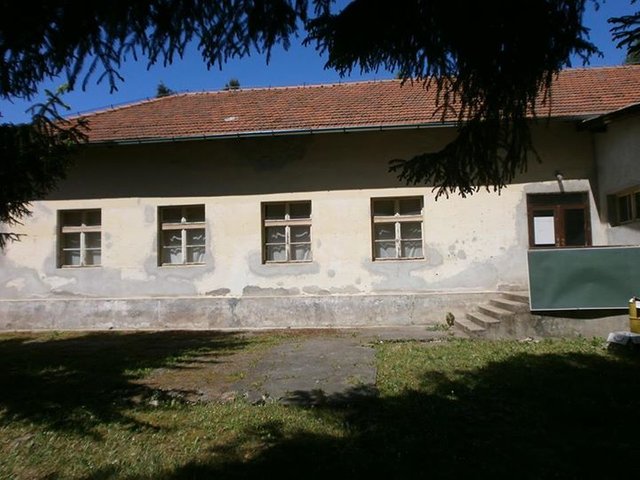
(this was FUNK's building a few years ago)
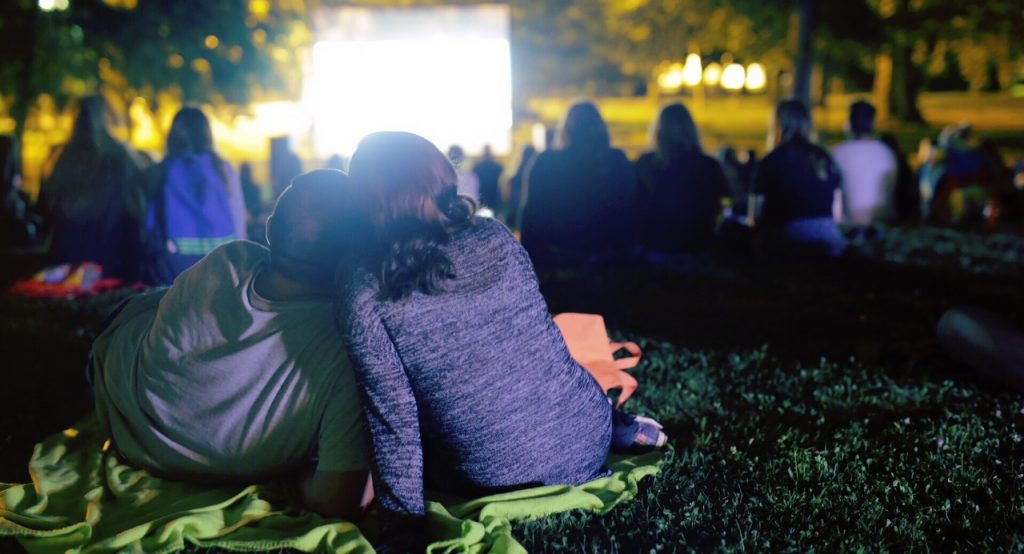
(and this is an open air cinema in front of the FUNK building last year)
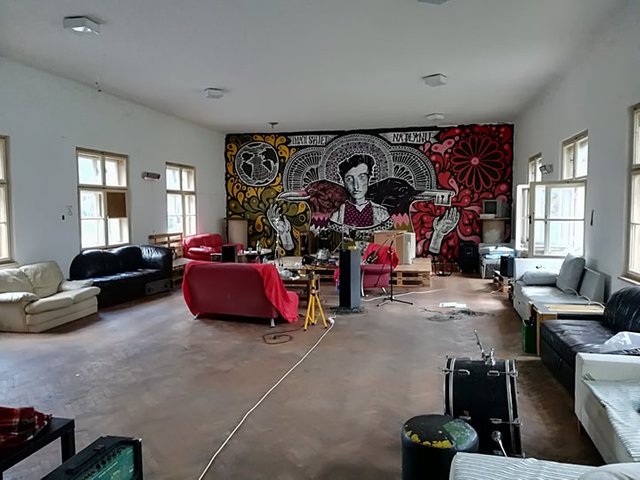
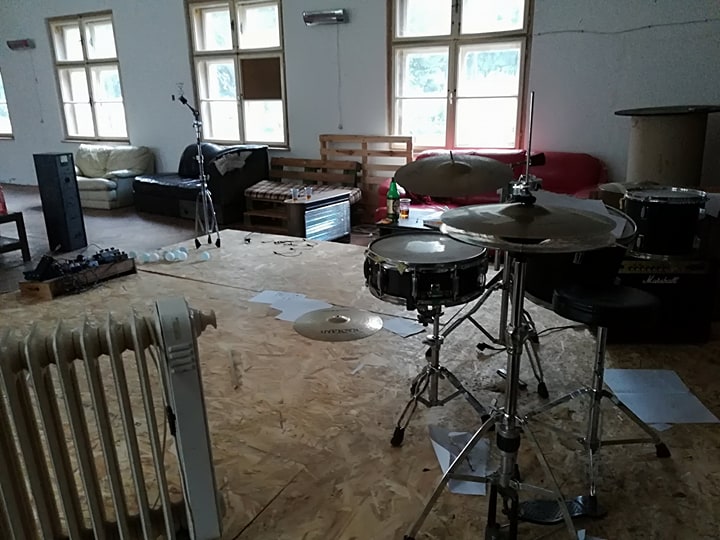
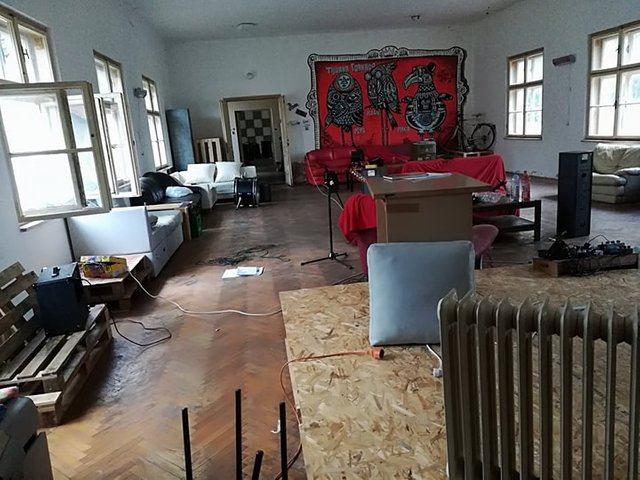
(here are a few shots of the place I took this weekend)
In fact, the community is so productive that FUNK released a compilation album 3 years ago featuring all the bands and musicians that are somehow involved with the community. You can check it out here https://forumudruganezavisnekulture.bandcamp.com/releases (3 of my bands - the disbanded Suho Grlo Nos, the newly reformed Lolita and my main band Moskau are also featured). It has become a very cool place in town and a perfect spot to do art related work. So I packed my portable studio and headed for FUNK.
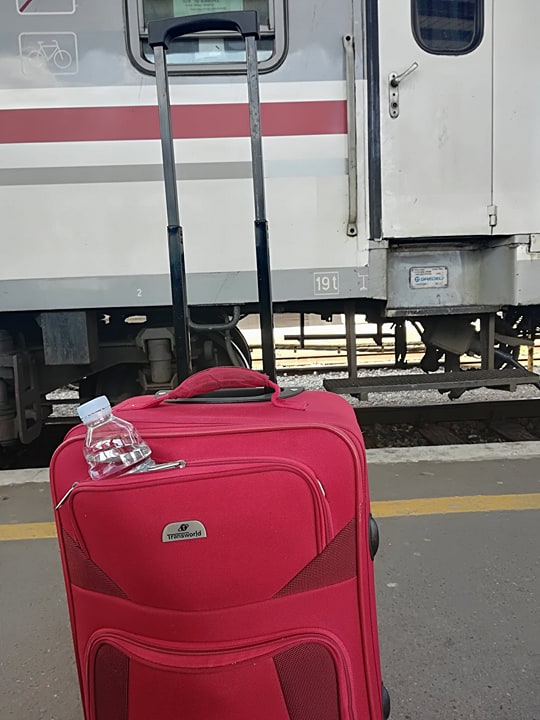
(inside: laptop, sound card, condenser mic, sm58, XLR cables, headphones)
WHY OPEN AIR RECORDING?
The idea of open air recording is not so crazy as it seems. I've read a few books on acoustics over the years and one thing kept showing up - the idea of natural acoustics. It dates back to ancient times and we all know about the ancient theaters and how you could hear someone whispering on stage from the back row. I've visited such a theatre in Plovdiv (Bulgaria) and it is in fact true. When it comes to ancient theaters, it's mostly due to the way they are constructed but there's a reason why they are constructed in open air. Those of you interested in HI-FI systems and HQ speakers may have heard that the only way to hear how your speakers really work is to take them outside and then play music on them. Although that's not entirely true, it's not entirely crazy. The thing about listening to sounds in open air is that the atmosphere and the surrounding vegetaion actually ''sucks up'' the unnecessary frequencies and what you end up with is the perfect acoustics because the acoustics are not actually there. The atmosphere actaully absorbs a lot of sound and since you are not in a room made of any kind of material, there is nothing adding anything to the sound. In other words, the acoustics of the open environment will give you the most accurate quality of the produced sound because the sound waves have nothing to bounce of. There are simply no surfaces that could reflect sound or surfaces that could modify the sound's quality. What you hear is the actual sound of the instrument you are recording. Of course, this isn't ideal for any type of recording (nothing is) nor is it ideal for any type of sound you want to get. Also, the campus area has a lot of surrounding buildings but it is so big that the reflections of the sound waves hitting the walls wasn't picked up by the microphones. There are also a lot of trees and a lot of grass covering the area so it sort of makes up for the surrounding man made structures. A win-win situation.
THE SOUND I WAS GOING FOR
The reason I've decided to try this out is that there was a particular kind of sound I was going for. The sound has been stuck in my head evers since I've started writing material for this album and I just had to find a way to get it. The sound I'm talking about is that vintage, bright, thin and slightly saturated jazz drum sound you hear in old jazz recordings. I did a little research and it turned out the way to get such a sound is fairly simple. The first thing you need to do is to forget element by element drum recording system because it wasn't around when the jazz recordings in question were recorded. The technology at the time was still up and coming and sound engineers worked with what they've had in order to get what was then the best possible sound. They would set up the drums and use one or two mics. One mic would be placed up high in front of the kit and the other would be placed somewhere in the room. This would result in a natural sounding balance of the sounds recorded from the mic closer to the drums and the mic in the room, used to make the drums sound as natural as possible. The thing to note here is that it is important the drum itself is a vintage jazz kit drum because modern drum kits just sound too different, no matter where or how you record them. Later, as technology progressed, they would add a kick drum mic and a snare drum mic for better mixing control, but the basis was still done with one or two mics. The reason why the drums sounded slightly too bright, thin and saturated was simply because the mics they used or the sound system it was later played on could only capture or reproduce as much. And it's not only jazz. If you listen to some other bands from the 50's or the 60's, even bands that had money to record in the best of studios (like the Beatles), the drums never have much of a low end. The one thing you can always clearly hear is the natural sound of the drum skins and a lot of low middle to high end. The quickest way to recreate such a sound today would be to record it with your mobile phone because the mic on your mobile phone records only certain frequencies and it mostly sucks in the low end. Here's an example of the sound in question:
(since this was done in 1969, there are added mics on the kick, the snare and the floor tom but there is still little low end. Also, notice that the kick drum is open. That's very important if you are looking for more of a thump than a thud.)
Here's another example:
(Sarah Vaughan performing Misty live in 64'. Notice the drum: one overhead microphone. That's it.)
THE SET UP AND THE RECORDING
Since I don't have particularly high quality microphones, I had to make sure I do the set up right and since I only used two mics (a condenser and and SM58), I also had to make sure the mics are placed correctly because not a lot of mixing can be done afterwards (for example, if you start to modify the sound of the kick, you will also modify the rest of the drum sound because the elements are not separated.) One of the main reasons I decided to go outside for this, as opposed to doing it as they did it back in the day in a room, was to compensate for the quality of my mics. I knew I couldn't do much editing later so I wanted to record in an environment that could be marked as 0 added quality. That way I was sure what I hear in the headphones is what I get and what I get is what I want. We placed the drum on the grass around as many trees as possible because we couldn't get away from the buildings. My drummer uses a very shallow open kick drum and a wooden shallow snare drum which is something drummers would use in the period. He also has handmade custom cymbals that have a big radius but very little sustain. He compensates for the sustain by adding some metal chains that vibrate over the cymbals as the cymbals vibrate, which adds the saturation. I placed the mics at a hight equal to my own (or slightly higher) in front of the kit. The condenser captured more birghtness while the SM captured more muffled, low mid sounds. I aimed the coindenser more in the direction of the snare and the SM more towards the kick drum. The most important thing was to find a balance between the velocity of the snare and the cymbals. It was also important to keep the mic levels reasonably low (especially the condenser mic) so they wouldn't be affected by wind or pick up the sound of birds or airplanes constantly going about the sky.
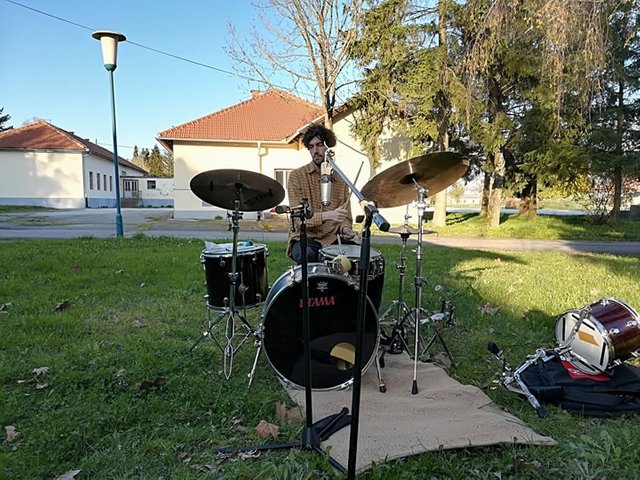
(initial set up)
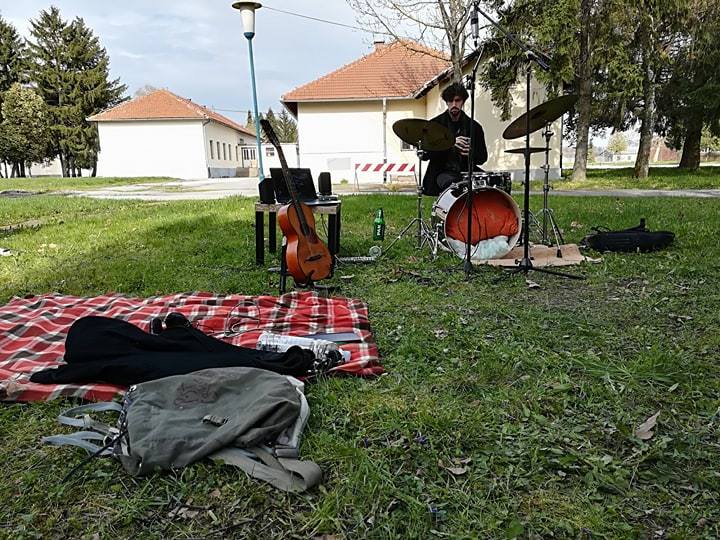
(final set up. Note the open drum kick with blankets in and the mics that are placed directly in front at twice the height my drummer is sitting down. They are placed in sort of a center between both cymbals, with SM directly above the kick and a condenser higher up above the snare. Also note the buildings behind as well as the trees and the grass area).
The final result was everything I hoped for. The drums sounded just like I wanted them to (maybe slightly too muffled in the low middle end but that can be dealt with) and the balances were really spot on. One last thing to mention before I link the actual drum sound is that you get a MONO SOUND. Now, nowadays the drums are done in stereo but back in the day, they were done in MONO and then later faked to STEREO (like if you listen to the Beatles on your headphones you will hear the snare and the hi-hat in the right headphone and the rest of the drums in the left). Since I was going for that vintage MONO sound, it wasn't a problem. Anyhow, this was a really fun experiment and I've learned a lot about the importance of mic placement and how every inch matters in an environment where you can hear every minute change in the sound. I also want to try and record other acoustic instruments outside as well as the electric ones to see what happens and how that works but it will have to wait for another beautiful spring weekend. Here's a drum track for ''I Never Said IT Was Nice'' - feel free to tell me what you think! Cheers!
You received a manual upvote from @MusicVoter and people following my Curation Trail due to the musical content of this post.
To find out how I decide who to up vote please READ THIS
Do you want to EARN CURATION REWARDS AUTOMATICALLY and help independent musicians?
HERE'S HOW
@MusicVoter is part of the Atom Collector Records family
Add dsound tracks and DTube & YouTube videos, get more fans and earn $INDIE!
Downvoting a post can decrease pending rewards and make it less visible. Common reasons:
Submit
This is cool dude! I have never tried recording in the open air before but I love the idea and the history behind it. I'm at a coffeeshop now with no headphones, but I'm gonna make a note to come back and listen to the audio later
Downvoting a post can decrease pending rewards and make it less visible. Common reasons:
Submit
Your post received an upvote by the @illuminati-Inc music curation team and its partner @curie.
You may consider voting for the Curie witness; all witness payouts are used to fund Curie operations including but not limited to more than 10 curation teams (vote here).
Downvoting a post can decrease pending rewards and make it less visible. Common reasons:
Submit